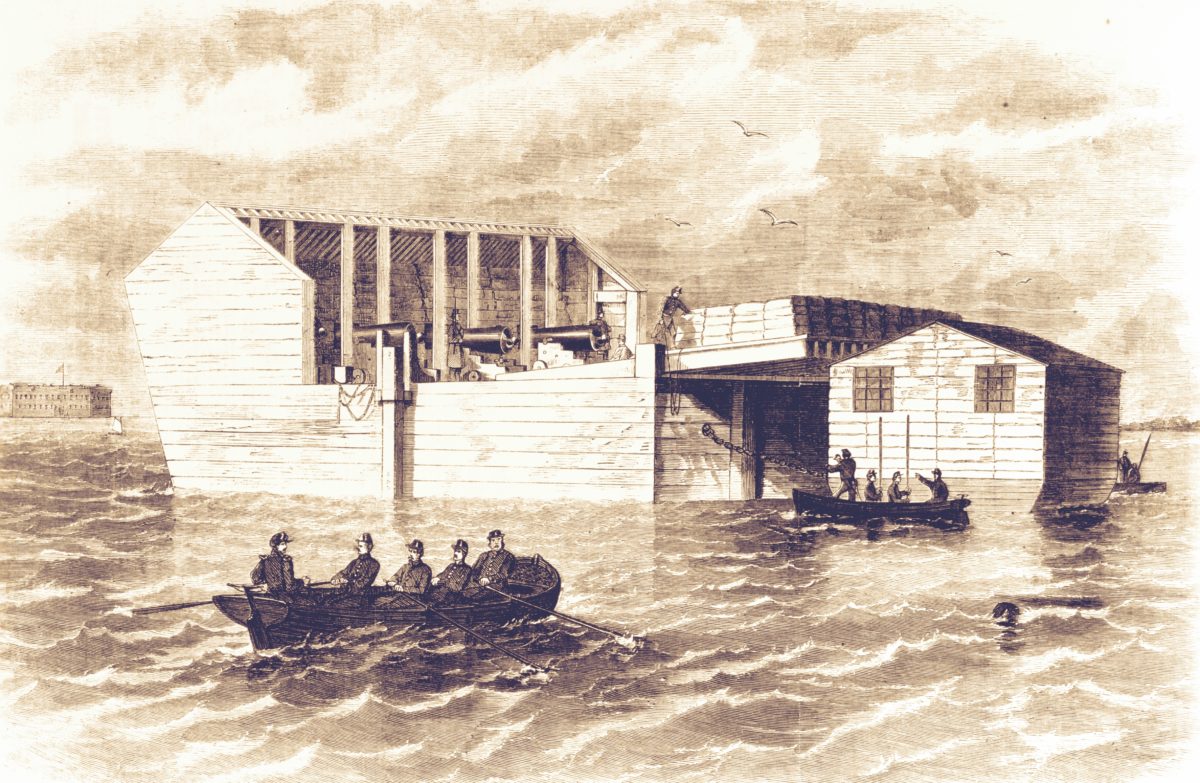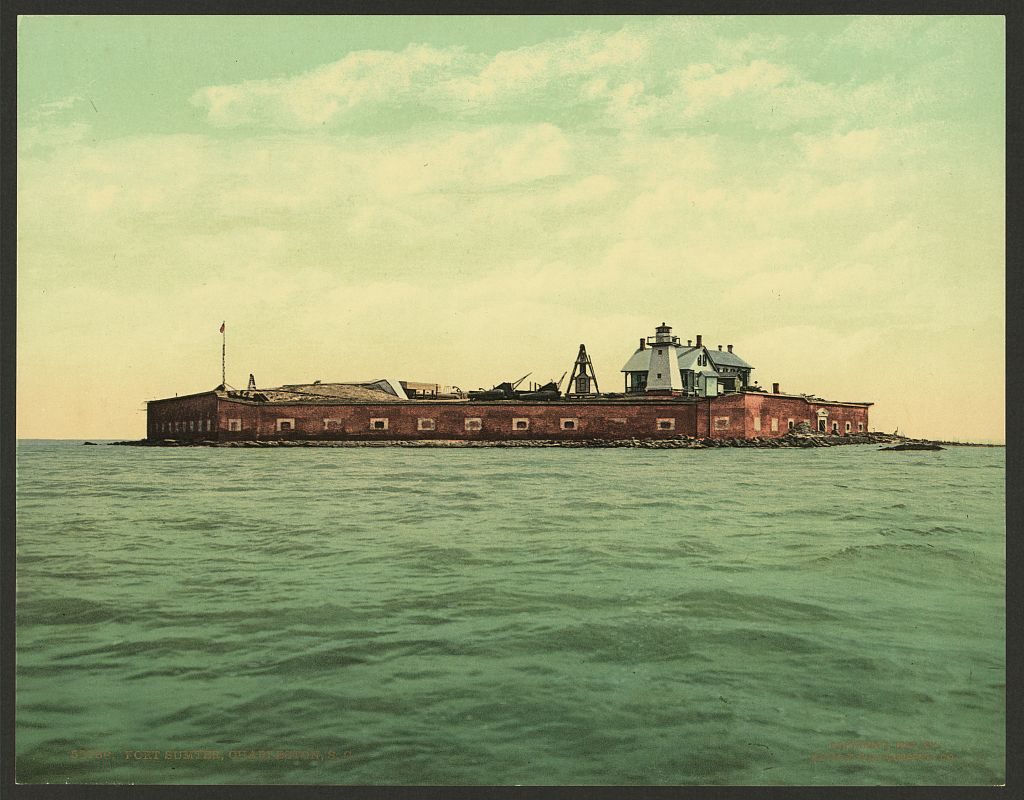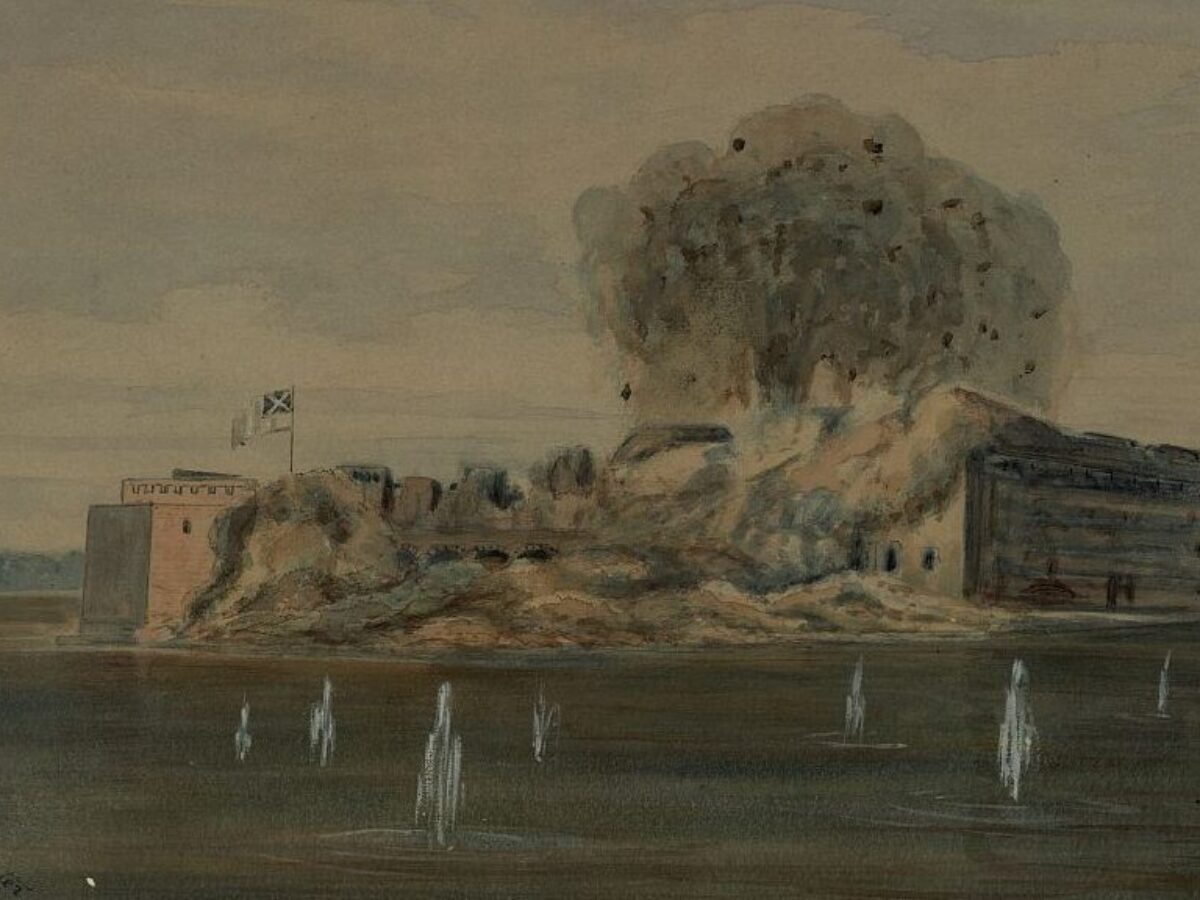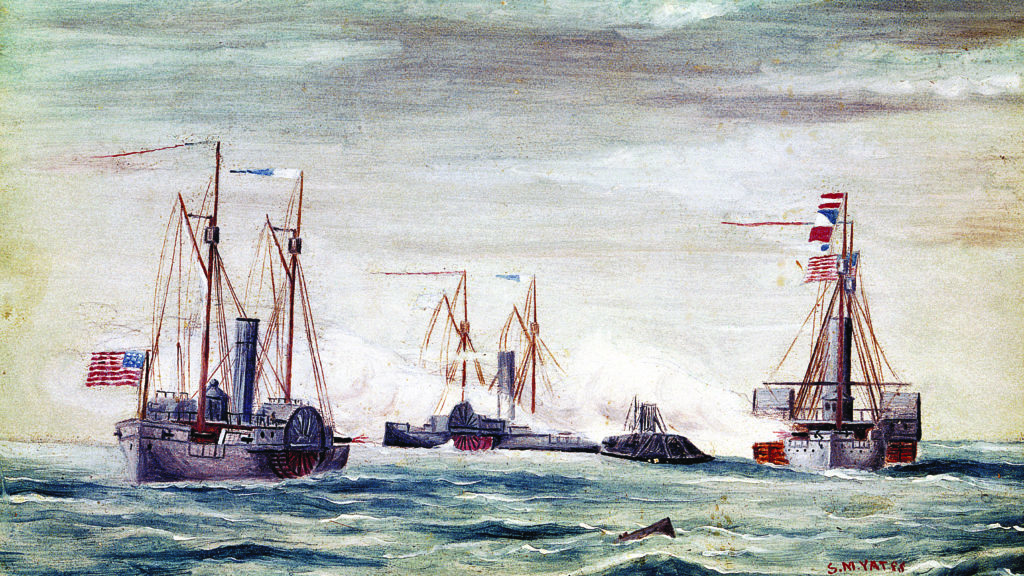Recommended for you
At 4:30 a.m. April 12, 1861, on James Island in Charleston Harbor, Confederate Lieutenant Henry Farley pulled the lanyard of a siege mortar. A solid thump rocked the ground as a huge 10-inch shell roared from the muzzle with a yellow-white flash. The heavy ball soared in an arc toward a dark shape looming a mile out in the calm waters of the harbor, a five-sided U.S. Army stronghold known as Fort Sumter. It burst with a searing red flash over the fort’s ramparts, scattering fragments mostly into the water but also onto Sumter’s parade grounds.
The Civil War had begun.
Over the next day and a half, a glut of shell and shot struck the facility’s stout brick walls and rained upon its bastions and dirt interior. The Confederates would use 47 cannons, howitzers, and mortars during the relentless 34-hour siege, most located within a series of forts and batteries that ringed the harbor.
But Sumter’s 85-man Federal garrison also had to keep an eye on a large, peculiar-looking contraption in the water itself—a device that begged for a more spectacular name but instead was known by the Rebels rather informally as the “Floating Battery.”
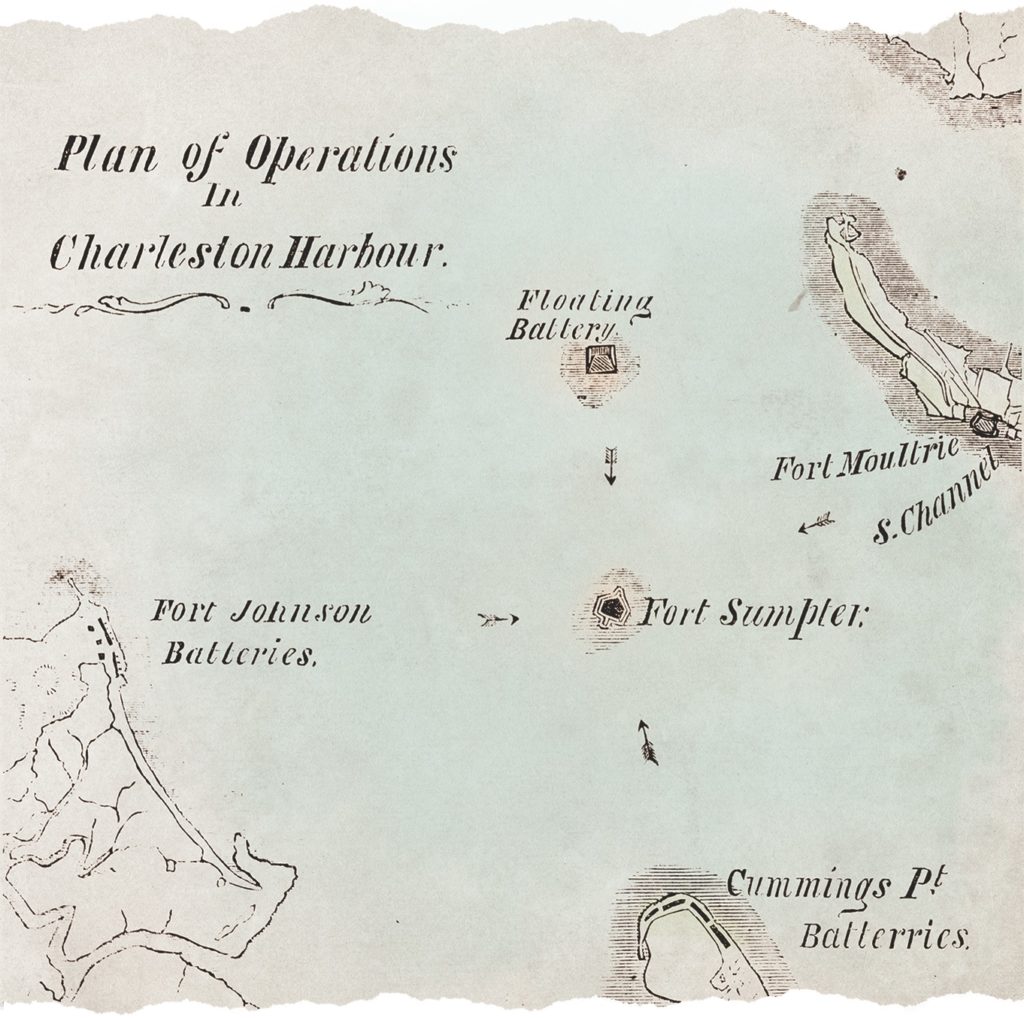
Great Expectations
Equipped with four guns, the battery had been built with grandiose expectations two months earlier. It would, however, become a quickly forgotten player in the drama that began the Civil War.
After seceding from the Union on December 20, 1860—the first of 11 states to do so eventually in the wake of Abraham Lincoln’s election—South Carolina had declared itself a republic. Anticipating a U.S. military response to the secession, state officials moved swiftly to establish an armed force that could defend the state’s interests. When South Carolina joined with six other states to form the Confederate States of America on February 8, 1861, its state forces became part of the Confederate Army.
Construction of the Floating Battery began during the six-week period that followed South Carolina’s secession—completed on a broad slipway in Marsh’s Shipyard near the Cooper River, in full view of Fort Sumter and its commander, Major Robert Anderson. Designed as a barge with a broad flat deck, the craft was 100 feet long and 25 feet wide. Along one long face, a heavy façade of solid straight pine timbers formed a wall with a sloped glacis and angled roof. It looked to Anderson, who watched through his field glasses with interest and mounting trepidation, like “half of a covered bridge.” He also noted that black slaves endeavored alongside white workers in assembling the contraption.
american first
What Anderson was watching was the creation of America’s first floating ironclad artillery battery—modeled after a vessel first produced in France in 1855 and used during the Crimean War. Under the supervision of Captain James (some sources say John) Randolph Hamilton, who had resigned from the Union Navy to join South Carolina’s state forces, the craft was crafted to carry four heavy cannons onto the harbor’s waters, which could be used to inflict damage to Sumter’s walls or serve as a threat to enemy ships. Hamilton was in command of the ambitiously named Navy of South Carolina.
The battery, which the Yankees generally referred to as “The Raft,” had multilayered sides of palmetto logs and pine timbers one foot square, each bolted to the others to form a virtually impenetrable barricade of solid wood. Anderson fully realized the four square openings he saw were gunports, and as the days passed, he watched an outer shell of six layers of heavy iron boilerplate being bolted onto the wood, then reinforced with railroad iron. The iron encased the entire face, sides, and sloping roof of the casemate.
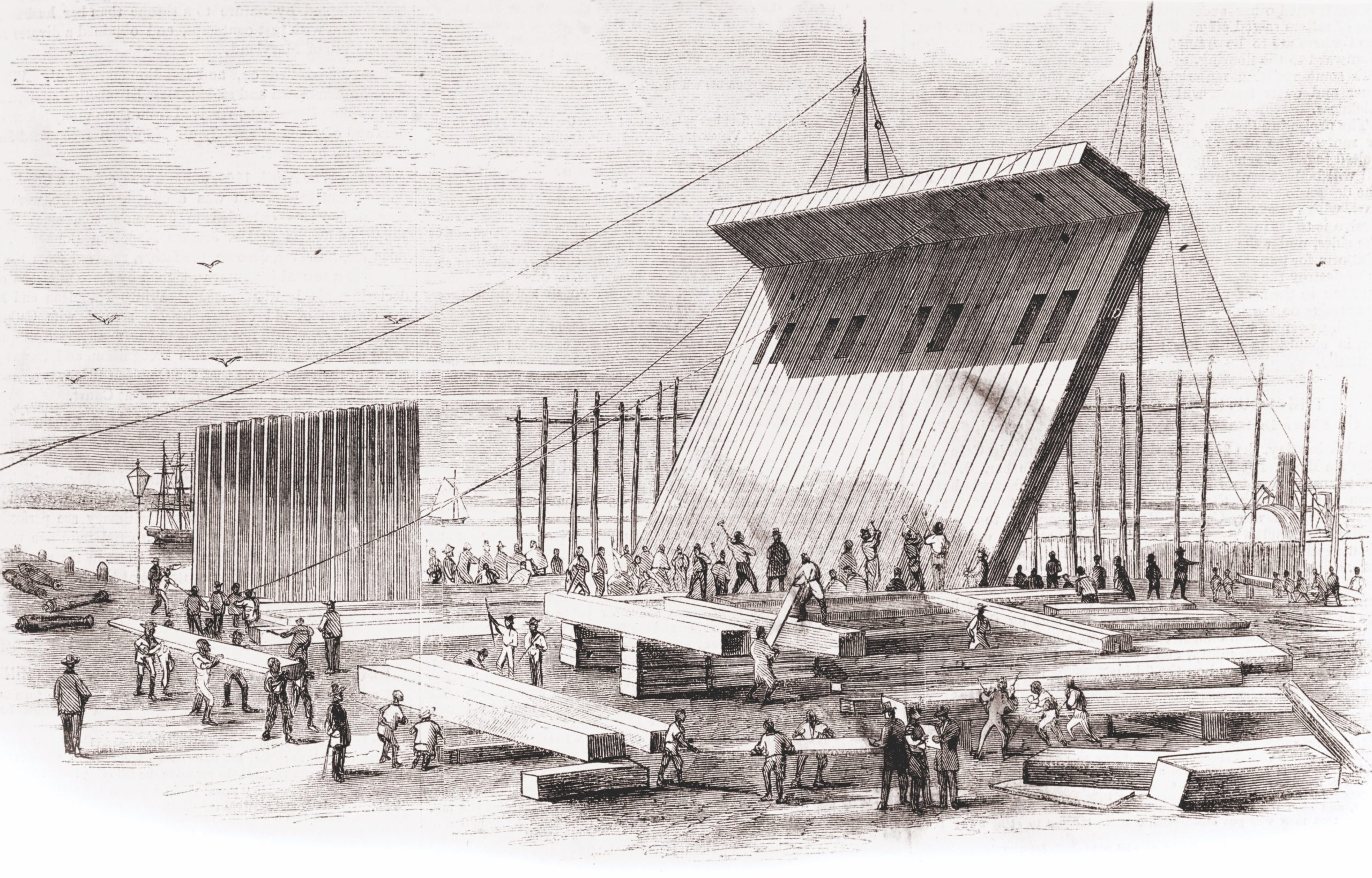
Under the four gunports, the façade angled backward, giving the illusion of a ship’s hull. This would make a solid hit from a cannonball unlikely. To the rear, the deck timbers contained magazines for the powder. Above these were hundreds of sandbags, which did double duty to shield the highly explosive powder magazines and counterbalance the heavy casemate and cannon. Solid shot was stored in holds directly behind the guns.
Originally Hamilton had hoped to mount boilers and a steam engine that would drive paddlewheels but relented when that proved impractical. The vessel would be towed by steam launches.
doomed to fail?
Anderson and his officers viewed the creation with mixed feelings. The consensus was that while the iron could protect it from Fort Sumter’s fire, it would almost certainly capsize or break apart during a battle. Captain John Foster, Anderson’s engineering officer, said with confidence: “I do not think this floating battery will prove very formidable as it can be destroyed by our fire before it can do much damage.”
Anderson, whose experience with artillery was top-drawer, was not as optimistic. He knew what a big gun such as a Dahlgren could do to a fort’s walls, especially when placed—as this new threat undoubtedly would be—in close proximity to Sumter. His greatest fear was that it would be aimed at the fort’s vulnerable rear wall containing the wooden gate and sally port.
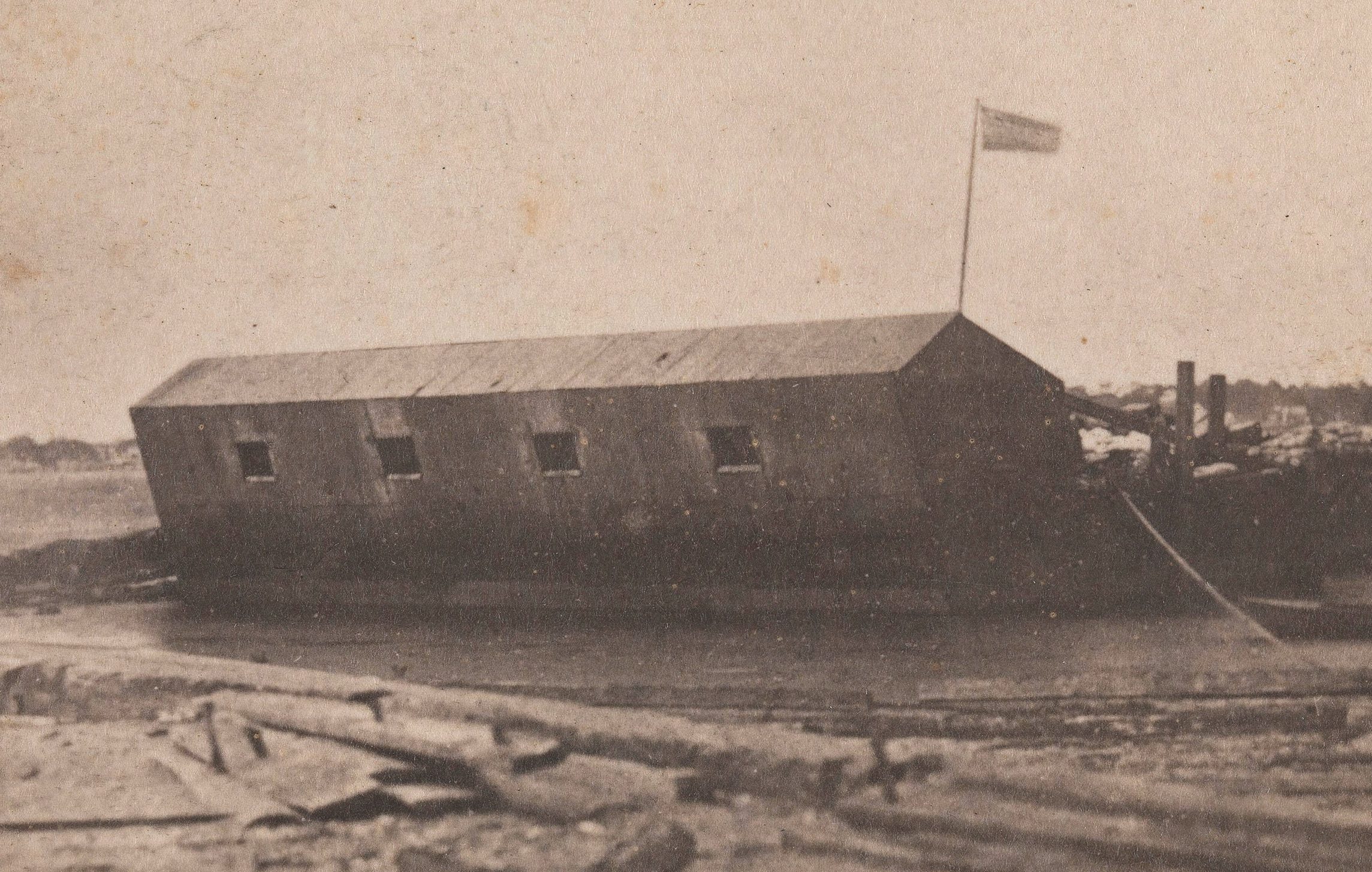
Unsure of what to do if the battery were moved close enough to be a serious threat, Anderson wrote the War Department in Washington for orders: “What course would it be proper to take, if without a declaration of war, I should see them approaching my fort with that battery? They may attempt placing it within good distance without a declaration of hostile intentions.”
buchanan blunders
Lame duck President James Buchanan prevaricated, however, issuing orders that were both confusing and contradictory. At a February Cabinet meeting, he blared, “Crack away at them!” He quickly changed his mind, however, in favor of passing the buck, clearly wanting to avoid any impulsive actions and therefore dumping the sizzling powder keg into the incoming president’s lap.
“If you are convinced by sufficient evidence that the raft of which you speak is advancing for the purpose of making an assault upon the fort, then you would be justified on the principle of self defense in not awaiting its actual arrival there, but in repelling force by force on its approach,” Buchanan, according to historian Richard Snow’s 2016 book Iron Dawn, equivocated. “If on the other hand you have reason to believe that it is approaching merely to take up a position at a good distance, should the pending question not be amicably settled, then, unless your safety is so clearly endangered as to render resistance an act of necessary self-defense and protection, you will act with the forbearance that has distinguished you heretofore.”
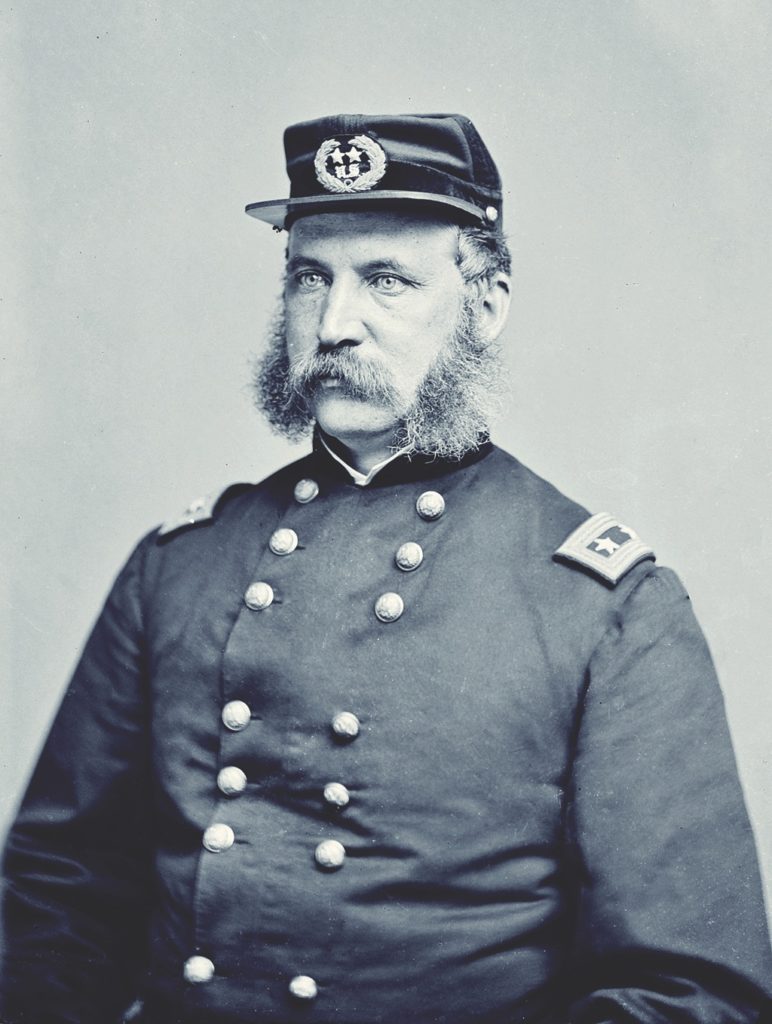
Buchanan’s response left Anderson with less confidence than before. In the end, the major determined to wait to see what would happen.
On a day in late February, shortly after 8 a.m., more than 5,000 Charlestonians were on hand to witness the Floating Battery’s launch. The vessel slid down the shallow ways into the water with a surge of waves until it was brought up short by heavy ropes. To the amazement of some and the relief of others, the huge craft did indeed float. It was then towed by steam launches to a cove at Sullivan’s Island near Fort Moultrie and anchored a mile from Sumter’s northeast wall.
The battery’s armament, which was mounted after the launch, consisted of two 32-pounder and two 42-pounder naval smoothbores—primarily anti-ship weapons. Unlike rifled guns, they weren’t reliable enough for siege operations against a stone-and-brick fort, lacking the needed penetration power. Anderson was relieved to learn that the Confederates had not mounted at least one Dahlgren, as he had feared.
Another incongruity was the decision to attach a floating hospital to the battery’s stern, fitted with several beds and two operating tables—to be towed along in case of need in battle.
tourist sight, not terror
Although the vessel was an immediate sensation in the city, attracting crowds of interested residents and tourists, those assigned to sail and fight it were less than sanguine. The men in Company D of the South Carolina Artillery Battalion, known as the Richardson Guards, were convinced that it was a death trap and would be sunk or shattered in battle. They derisively called it the “slaughter pen.”
Opined a reporter for The New York Times: “[I]f the tide should turn around, and present her unprotected side to Major Anderson’s death dealers at only six hundred yards, Captain Hamilton’s boys will find a bloody grave.”
As Lincoln assumed the presidency on March 4, 1861, he realized that Anderson’s Fort Sumter garrison had only enough food to last until about April 15. Meanwhile, General P.G.T. Beauregard, commander of the Southern forces in Charleston, cabled the new Confederate government in Montgomery, Ala., for instructions. He was told in no uncertain terms to “issue an order” for the Union forces to evacuate and surrender the fort. But by the evening of April 11, Anderson and his garrison continued to hold out.
That was the final straw. All night, Beauregard’s batteries and troops prepared for the moment of truth. An ultimatum had been delivered to Anderson that he surrender and evacuate the fort. Anderson flatly refused. By 3 a.m. April 12, the die had been cast.
the First shot
Powder and shells, cartridges and balls, primers and lanyards were readied. Then the fateful order came from Beauregard to open fire at 4:30 a.m. The 21-year-old Farley, noted for being the first cadet to resign from the U.S. Military Academy after his native South Carolina seceded, was given the honor of firing the first shot. That would be the signal for the other guns around the harbor to begin firing on Sumter.
Wanting to conserve his ammunition, Beauregard had ordered that the batteries fire in a predetermined sequence, going counterclockwise around the harbor, firing only every two minutes. But soon the gunners were firing at will, keeping up a steady cannonade.
Anderson kept his garrison in protected casemates until full daylight. Most accounts of the Federals’ response to the barrage report that the commander that morning ordered his guns to open fire on the enemy batteries that presented the greatest threat, but chose not to use the cannons on the upper parapet since they were exposed to enemy fire.
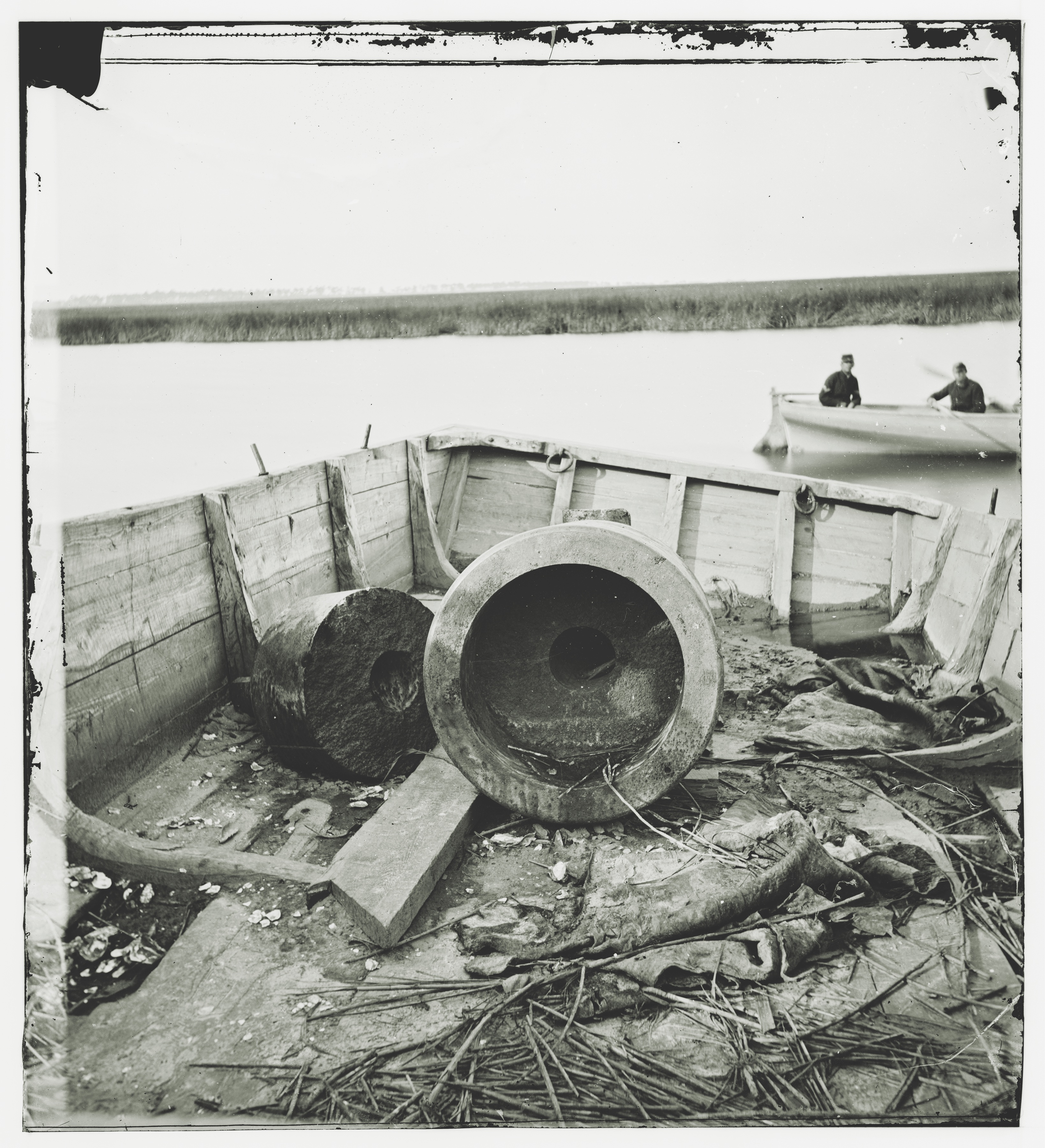
In reality, the Federals fired only six shots throughout the siege, according to Civil War historian Craig Swain. What finally forced Anderson to agree to surrender the citadel after 34 hours was the Confederate use of “hot shot,” which caused fires in the fort—fires that threatened Anderson’s plentiful gunpowder supplies. Despite the extent of Confederate artillery fire, photographs taken of the fort after the engagement show little damage to the side facing Sullivan’s Island and the Floating Battery. The only significant damage was to the other side of the fort—the gorge wall—by the batteries at Cummings Point on Morris Island—and even that was not substantial.
By the time Anderson surrendered and lowered the scorched, torn U.S. flag, Beauregard’s gunners had loosed more than 3,000 shells and shot at the fort. Hamilton and the Floating Battery remained engaged throughout.
No official tally, however, was ever given for the number of shots it fired, with counts ranging from as low as 100 to as many as 490.
the floating battery vindicated
The Charleston Mercury labeled the siege a “splendid pyrotechnics exhibition, [and] many of the guns on the parapet had been dismounted and part of the parapet swept away.” It also stated proudly that the creators of the Floating Battery “have fully vindicated the correctness of their conception. Shot after shot fell upon them and glanced harmlessly away. [From] their favorable position their shots fell with effect upon Fort Sumter.”
Whether the Floating Battery ever fired another shot in anger after the siege of Fort Sumter is unsubstantiated. There is evidence it was placed just off Fort Johnson on James Island. Fort Johnson, the site where Farley fired the first shot in April 1861, was considered “Middle Ground” in the harbor, and it is likely, though unverified, that the Floating Battery fired on Federal ironclads on April 7, 1863. Those intended targets were well out of range, however.
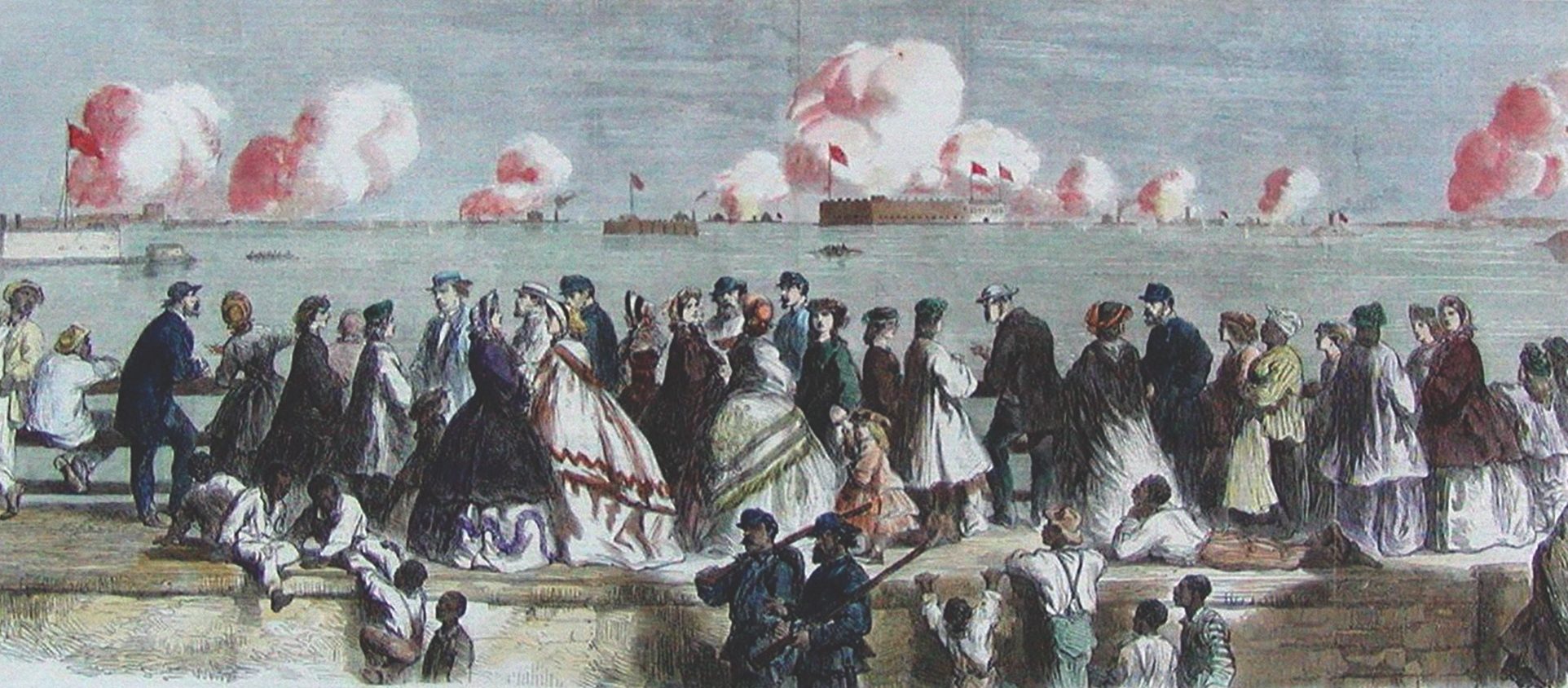
The Confederates were compelled to abandon Fort Sumter in the summer of 1863, the same year the Floating Battery was reportedly damaged in a storm and its guns and the iron sheathing were removed. The structure soon came apart, and by 1865 only part of its casemate remained above the ever-shifting sandy waters off Sullivan’s Island.
Anderson was eerily prescient commenting on the battery to the U.S. War Department after returning to Washington: “If someone conceived the idea, and it wouldn’t take much imagination on the part of these new enemies, of mounting a steam engine inside the battery, the results could be dire for the wooden warships that make up the entirety of the U.S. Navy.”
An avid student of Civil War, naval, and military history, Mark Carlson also spent eight years as a reenactor. He is a member of the Military Writers Society of America, has contributed material to more than 20 national magazines, and is the author of The Marines’ Lost Squadron—The Odyssey of VMF-422. He lives in San Marcos, Calif.

